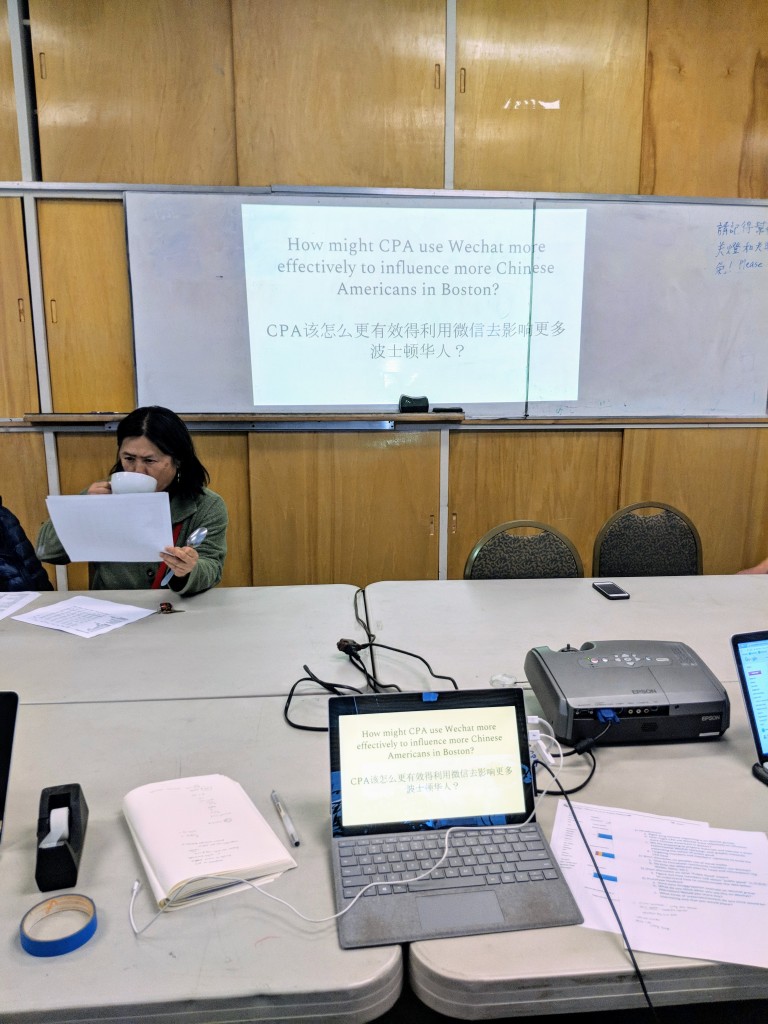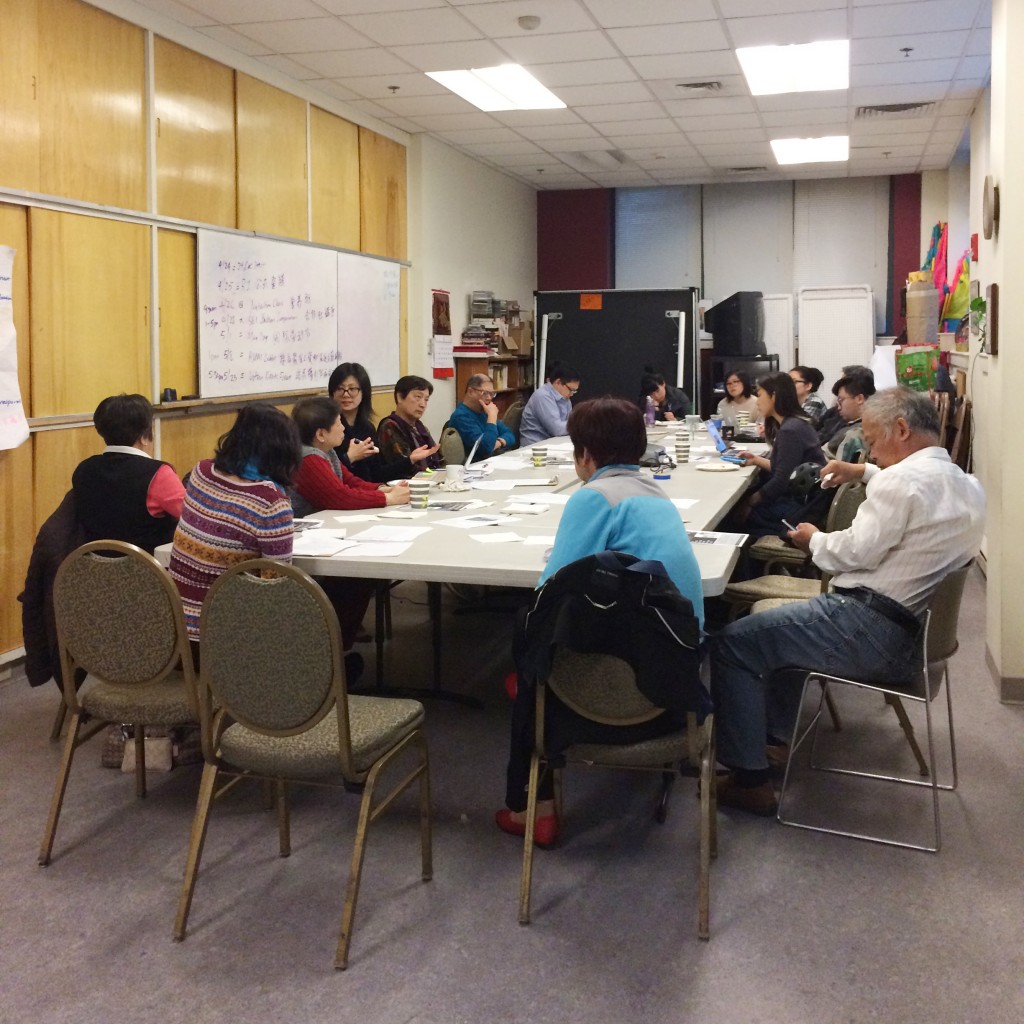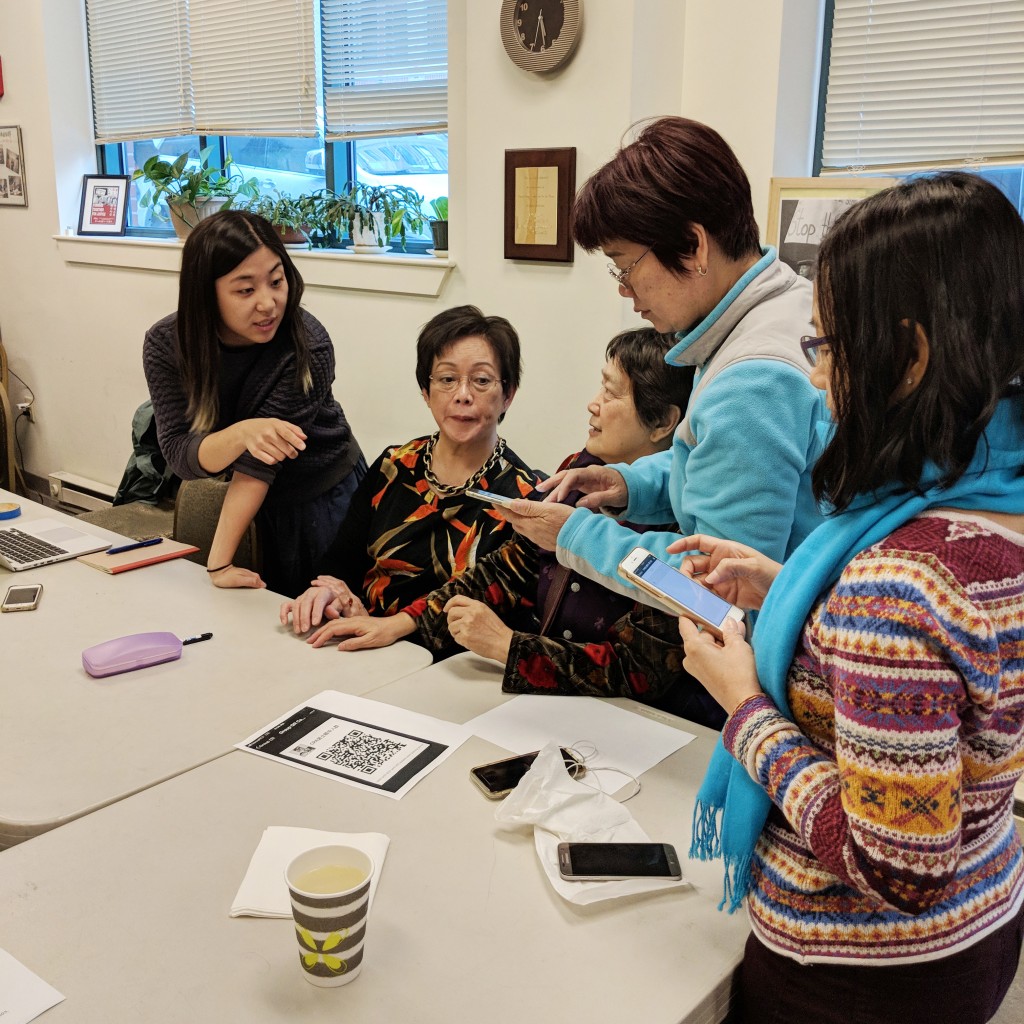On Friday, April 20, we facilitated a workshop at CPA Boston from 5-6 PM. The attendees of the workshop were members of the CPA Steering Committee. There were approximately fifteen people in attendance by 6 PM. Our primary question for the meeting was: How might CPA use Wechat more effectively to influence more Chinese Americans in Boston?
Here is our workshop presentation. Here are our agenda and meeting notes.
The meeting was held in Mandarin and Cantonese, with some simultaneous interpretation into English. CPA staff and members described their experiences with Wechat. Generally, the Chinese-speakers were more knowledgeable about Wechat and were involved in more private group chats. Mrs. Tang, the most knowledgeable about Chinatown WeChat groups, noted how whenever she disagreed with right-wing opinions in group chats, she would feel attacked. Fiona, the workers center organizer, expressed the need to create much more educational Wechat content to be able to respond to the daily articles by right-wing Chinese. Lydia and Karen, former and current executive directors of CPA, discussed the need for long-term planning for content-creation and gave us feedback for utilizing existing material such as the Asian American Racial Justice Toolkit created by CPA San Francisco.
Through the workshop, we were able to get quick feedback on our Wechat infographic prototype and we were able to crowdsource a list of future content topics and resources to continue making content. We were also able to connect with others in the Chinese American activist community who are organizing a more extensive effort around utilizing Wechat. Our next steps include 1) continuing to create content and to share with our new Wechat group for further feedback, and 2) conducting research on right-wing Chinese WeChat mobilization strategies.





